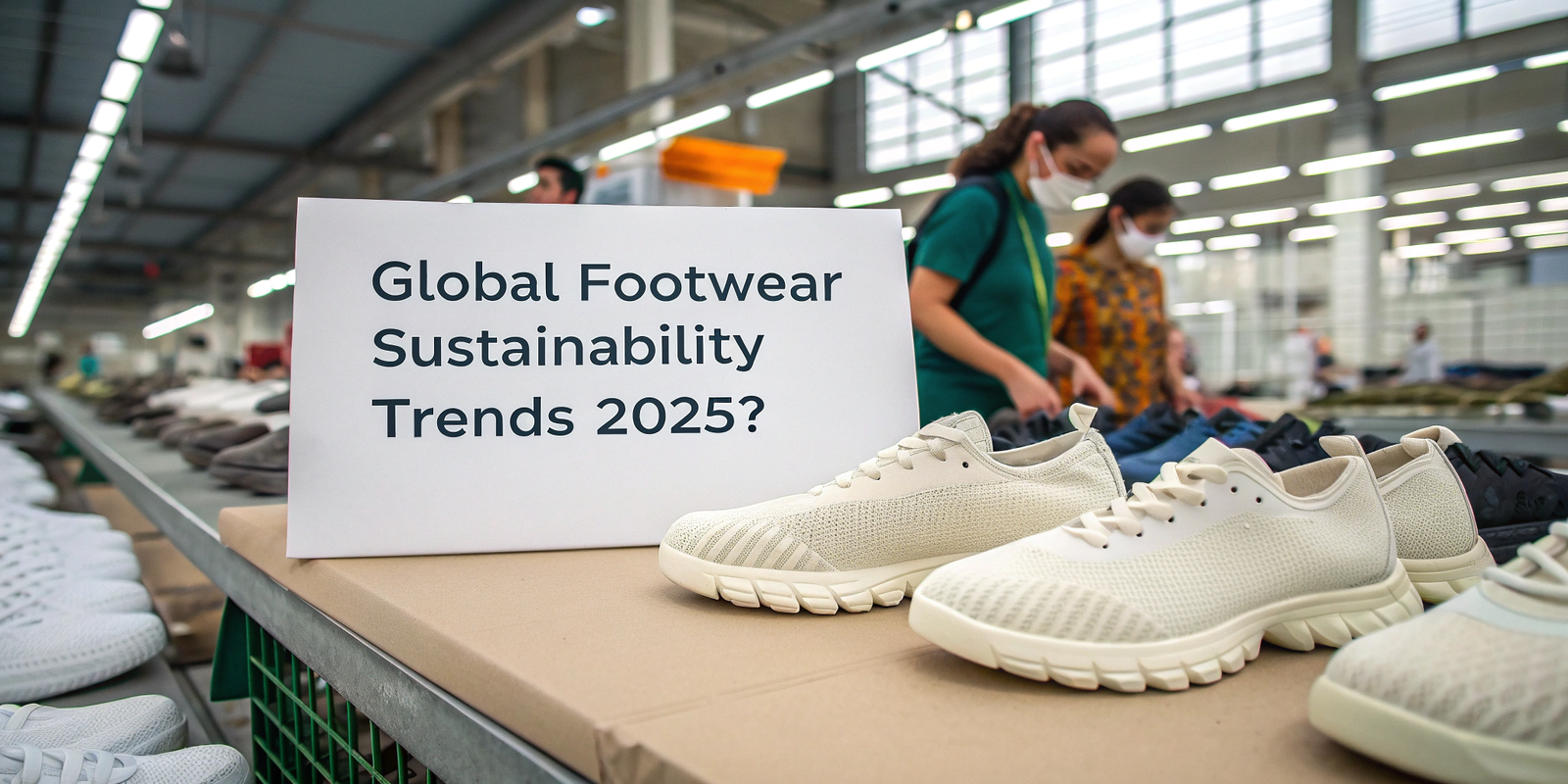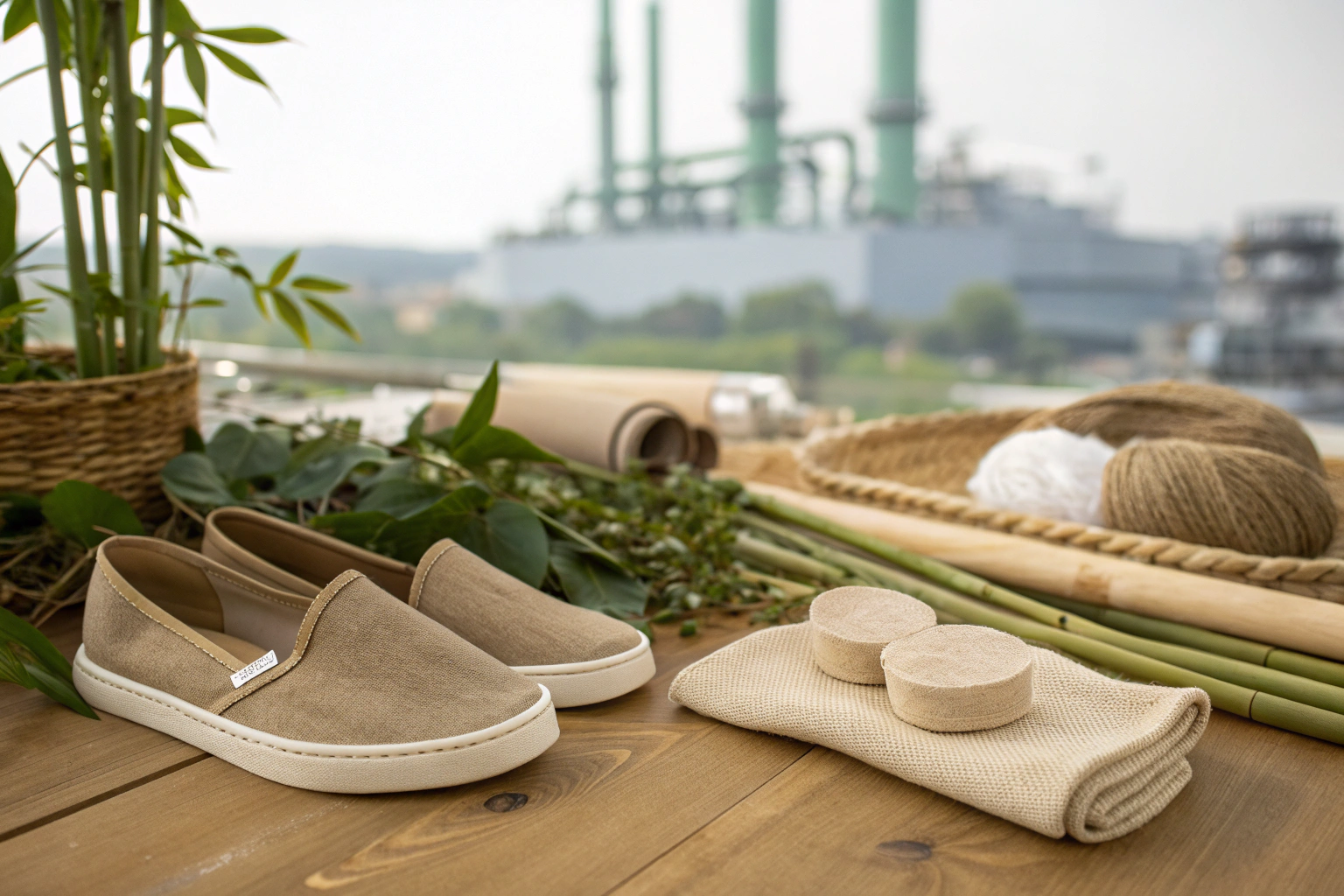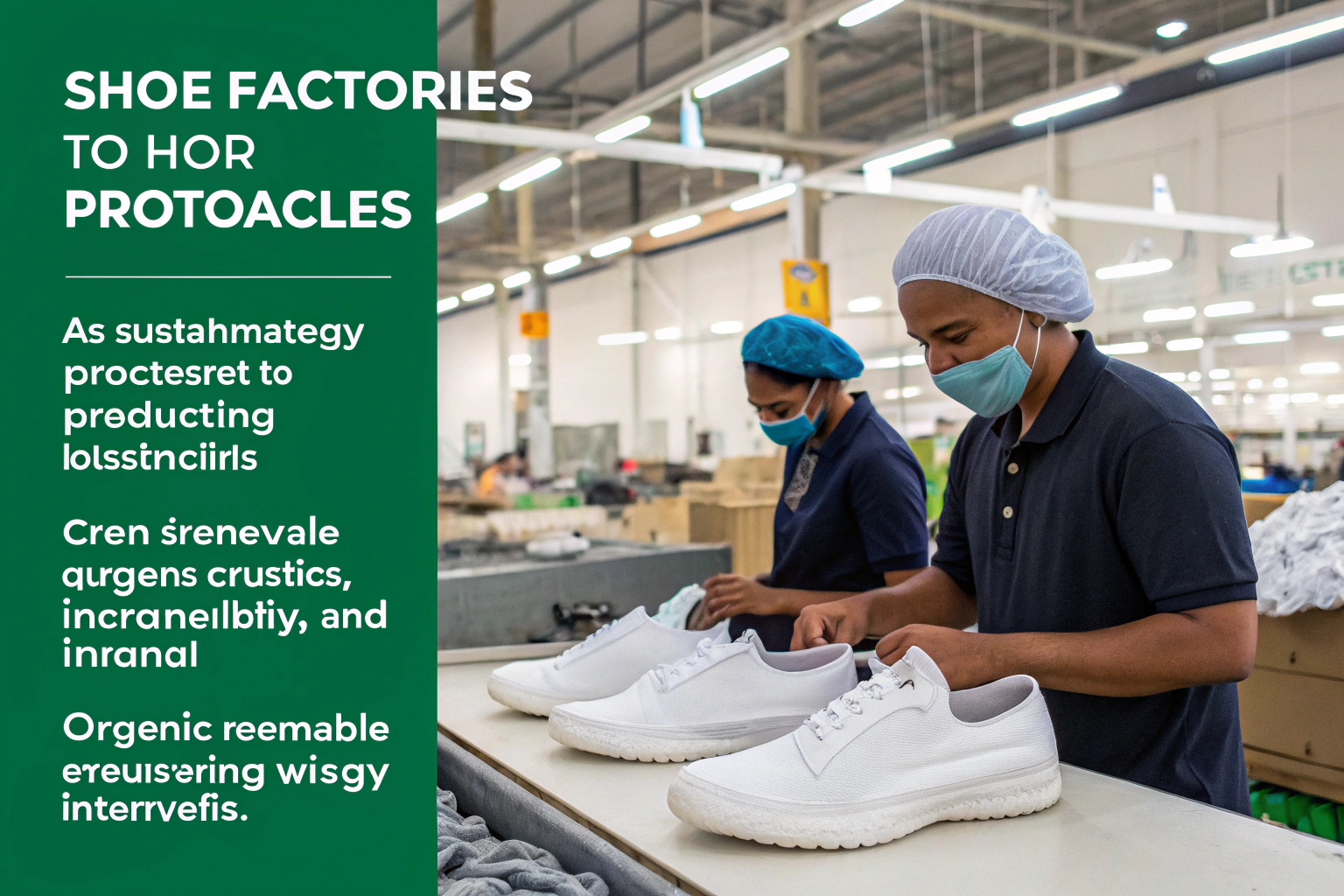Global Footwear Sustainability Trends 2025?
Are you wondering how sustainability will shape the footwear industry by 2025? It's a major driving force impacting everyone.
By 2025, sustainability will be a core expectation, not just a trend, in footwear. This will involve significant shifts towards eco-friendly materials, circular production models, and transparent supply chains, driven by consumer demand and regulatory pressures.
 Why Are Sustainable Shoes Becoming Essential?
Are you pondering why sustainable shoes are moving from niche to essential? There are strong ethical and market forces at play.
Sustainable shoes are essential because consumer awareness of environmental and social impact is rapidly increasing. Brands must adapt to meet demand for ethical products, comply with growing regulations, and secure long-term viability by reducing resource depletion and waste.
The shift towards sustainable footwear is not just a passing fad; it is a fundamental change in how the industry operates. It is driven by many factors, from the demands of the customer to the needs of the planet.
Why Are Sustainable Shoes Becoming Essential?
Are you pondering why sustainable shoes are moving from niche to essential? There are strong ethical and market forces at play.
Sustainable shoes are essential because consumer awareness of environmental and social impact is rapidly increasing. Brands must adapt to meet demand for ethical products, comply with growing regulations, and secure long-term viability by reducing resource depletion and waste.
The shift towards sustainable footwear is not just a passing fad; it is a fundamental change in how the industry operates. It is driven by many factors, from the demands of the customer to the needs of the planet.

Key Drivers for Sustainable Footwear Becoming Essential
This movement is powered by multiple forces, all pointing towards a more responsible future.
- Consumer Demand and Awareness: Today's consumers, especially younger generations, are more informed and conscientious. They actively seek out products that align with their values. They want to know where their shoes come from, how they are made, and what impact they have on the environment and the people who make them. This demand directly influences purchasing decisions.
- Regulatory Pressures and Legislation: Governments worldwide are introducing stricter environmental regulations. These include limits on chemical use, waste disposal, and carbon emissions. The footwear industry must comply with these laws, pushing manufacturers towards more sustainable practices. For example, standards for traceable materials or reduced water usage are becoming common.
- Brand Reputation and Value: For brands, embracing sustainability is no longer optional. It is a critical component of their reputation. Companies that demonstrate a genuine commitment to ethical and environmental practices build trust and loyalty with their customer base. This can lead to increased sales and market share. On the other hand, a lack of sustainable practices can damage a brand's image and lead to customer boycotts.
- Resource Scarcity and Cost Efficiency: Traditional footwear manufacturing often relies on non-renewable resources and generates significant waste. As resources become scarcer, their cost increases. Sustainable practices like using recycled materials, reducing waste, and improving energy efficiency can lead to long-term cost savings and a more resilient supply chain. This makes good business sense.
- Investor Expectations: Investors are increasingly looking at a company's environmental, social, and governance (ESG) performance. A strong commitment to sustainability can attract investment, as it signals a forward-thinking and responsible business model that is better prepared for future challenges and opportunities.
| Driver | Impact on Footwear Industry |
|---|---|
| Consumer Consciousness | Drives demand for eco-friendly and ethical products. |
| Government Regulations | Mandates stricter environmental and social compliance. |
| Brand Image | Enhances reputation and builds customer loyalty. |
| Resource Management | Promotes efficiency, reduces waste, and stabilizes costs. |
| Investment Appeal | Attracts capital from ESG-focused investors. |
How Are Production Processes Adapting?
Are you curious about how shoe factories are changing to produce more sustainably? It involves new methods and materials.
Footwear production processes are adapting through the adoption of innovative, eco-friendly materials like recycled plastics and organic cotton, implementing water-saving technologies, employing waste reduction strategies, and embracing renewable energy sources. This also includes designing for disassembly and recycling.

Innovations in Sustainable Footwear Production
The transformation of shoe manufacturing involves changes in every step, from design to the final product.
- Material Innovation: This is perhaps the most visible change. Factories are actively shifting away from virgin synthetic materials towards alternatives. This includes recycled PET bottles for uppers, recycled rubber for soles, organic cotton, and innovative bio-based materials like mushroom leather or plant-derived polymers. These materials reduce reliance on fossil fuels and minimize waste.
- Water and Energy Efficiency: Manufacturing footwear can be water and energy-intensive. Factories are implementing closed-loop water systems that recycle water used in processes like dyeing or cleaning. They are also investing in renewable energy sources, such as solar panels, to power their operations, significantly reducing their carbon footprint.
- Waste Reduction and Circularity: The focus is on minimizing waste at every stage. This means optimizing cutting patterns to reduce material scraps, finding uses for production byproducts, and implementing robust recycling programs. The concept of "design for circularity" is also gaining traction, where shoes are designed to be easily disassembled and recycled at the end of their life.
- Adhesive and Chemical Alternatives: Traditional glues and chemicals used in shoe manufacturing often contain volatile organic compounds (VOCs) that are harmful to workers and the environment. Manufacturers are moving towards water-based adhesives, non-toxic dyes, and other eco-friendlier chemical alternatives. This creates a safer working environment and reduces pollution.
- Automation and Lean Manufacturing: Increased automation can reduce material waste and energy consumption by optimizing precision and efficiency. Lean manufacturing principles — focusing on eliminating waste in all forms — also naturally align with sustainability goals, making processes more streamlined and less resource-intensive.
| Adaption Strategy | Specific Application in Footwear Production | Environmental Benefit |
|---|---|---|
| Eco-Materials | Recycled polyester, organic cotton, bio-leather, recycled rubber soles. | Reduces reliance on virgin resources, lowers carbon footprint. |
| Resource Efficiency | Water recycling systems, solar power, optimized energy consumption. | Minimizes water usage, reduces greenhouse gas emissions. |
| Waste Minimization | Pattern optimization, material reuse, end-of-life recycling programs. | Decreases landfill waste, promotes circular economy. |
| Safer Chemistry | Water-based glues, non-toxic dyes, lower VOC chemicals. | Protects worker health, reduces air and water pollution. |
| Lean Manufacturing | Automated processes, optimized production flows. | Reduces material waste, improves energy efficiency. |
What Are the Challenges in Adopting Sustainable Footwear? Are you aware of the hurdles the footwear industry faces in moving towards full sustainability? It's not a simple path. Adopting sustainable footwear faces challenges including higher upfront costs for eco-materials and new tech, supply chain transparency complexities, maintaining quality with novel materials, and overcoming consumer price sensitivity while educating the market about long-term value. I have personally seen many factories grapple with the challenges of becoming more sustainable. While the intent is strong, the practicalities can be complex. Integrating our GRS certification and BCI membership means we actively address these challenges head-on.
Major Hurdles to Widespread Sustainable Footwear Adoption
The journey to full sustainability is paved with good intentions but also with significant obstacles.
- Cost Implications: Sustainable materials and technologies often come with a higher price tag than their conventional counterparts. This increased cost can make sustainable shoes more expensive to produce, which then translates to higher retail prices. Consumers, while valuing sustainability, can be price-sensitive, making it challenging for brands to compete on cost alone.
- Supply Chain Complexity and Transparency: Achieving true sustainability requires tracing materials from their origin (from the farm for cotton or the oil rig for synthetics) through every stage of production. This level of transparency is incredibly difficult in a global, fragmented supply chain, where multiple suppliers and sub-suppliers are involved. Verifying ethical labor practices and environmental impacts across this chain is a massive undertaking.
- Material Performance and Durability: New eco-friendly materials do not always perform as well as traditional ones in terms of durability, flexibility, or aesthetic appeal. It takes significant research and development to create sustainable alternatives that meet the high performance and quality standards consumers expect from their footwear. Ensuring longevity is key when promoting sustainability.
- Scaling Production: Many innovative sustainable materials or processes start at a small scale. Scaling this production to meet the demands of a global footwear industry can be challenging. It requires significant investment in new machinery, training, and infrastructure, which not all factories are equipped to provide immediately.
- Greenwashing and Consumer Education: The rise of "greenwashing"—where companies make misleading claims about their sustainability—erodes consumer trust. Educating consumers about what truly makes a shoe sustainable, and differentiating genuine efforts from superficial ones, is a continuous challenge. Clear and consistent communication is essential.
| Challenge | Impact on Sustainable Footwear Adoption |
|---|---|
| Higher Costs | Increases production price, potentially impacting consumer affordability. |
| Supply Chain Opacity | Difficulty in verifying ethical and environmental claims end-to-end. |
| Material Performance | Ensuring new materials match or exceed traditional quality and durability. |
| Production Scalability | Difficulty in ramping up eco-friendly processes for mass production. |
| Consumer Trust/Knowledge | Risk of greenwashing, need for clear and honest communication. |
How Buyers Can Evaluate Sustainable Suppliers?
Are you looking for ways to verify a footwear supplier's sustainability claims? It requires careful screening and investigation.
Buyers can evaluate sustainable suppliers by checking for certifications (like GRS, BSCI, SEDEX), requesting transparent reporting on material sourcing and energy use, asking about waste management and labor practices, and conducting facility audits to ensure alignment with their sustainability goals.
 At Lucas, we believe in full transparency. We openly share our certifications and practices because we know that trust is built on verifiable actions. When a buyer asks us about sustainability, we welcome the deeper conversation.
At Lucas, we believe in full transparency. We openly share our certifications and practices because we know that trust is built on verifiable actions. When a buyer asks us about sustainability, we welcome the deeper conversation.
Key Metrics for Vetting Sustainable Footwear Suppliers
To truly assess a supplier's commitment to sustainability, buyers need to look beyond marketing claims and examine concrete evidence.
- Certifications and Audits: Look for internationally recognized certifications. For social compliance, BSCI (Business Social Compliance Initiative) and SEDEX (Supplier Ethical Data Exchange) are crucial, showing commitment to fair labor practices. For environmental practices, look for GRS (Global Recycled Standard) if they claim recycled content, or Certifications for organic materials. Factory audits, conducted by independent third parties, provide a snapshot of their operations against set standards.
- Material Traceability and Sourcing Policies: A truly sustainable supplier can tell you where their materials come from. Ask about their policies on sourcing materials. Do they prioritize recycled, organic, or responsibly harvested materials? Do they have a clear chain of custody for these materials? This shows commitment to ethical sourcing.
- Environmental Impact Reporting: Ask for data. A good sustainable supplier should have systems in place to measure and report on their environmental performance. This includes data on water consumption, energy usage (and proportion from renewable sources), waste generation, and CO2 emissions per pair of shoes. Consistent reporting demonstrates a serious commitment.
- Labor Practices and Social Responsibility: Beyond certifications like BSCI, inquire about their specific labor practices. This includes fair wages, safe working conditions, limits on working hours, and the absence of child or forced labor. A supplier that values its employees is more likely to uphold other ethical standards. Ask to see their employee welfare programs.
- End-of-Life and Circularity Initiatives: Does the supplier consider the entire lifecycle of the shoe? Inquire whether they participate in or plan to implement programs for product take-back, repair services, or shoe recycling. While this is less common, it indicates a forward-thinking approach to circularity and reducing environmental impact beyond manufacturing.
| Evaluation Area | Specific Questions/Evidence to Seek | What It Indicates |
|---|---|---|
| Certifications | BSCI, SEDEX, GRS, OEKO-TEX, GOTS certifications? Independent audit reports? | Commitment to social compliance, responsible material use, and verified standards. |
| Material Sourcing | Policies for recycled/organic materials? Traceability records? | Dedication to eco-friendly inputs and transparent supply chain. |
| Environmental Ops | Water/energy consumption data? Renewable energy use? Waste management plan? | Active efforts to reduce environmental footprint. |
| Labor Practices | Fair wage policies? Worker safety protocols? Employee benefits? | Ethical treatment of workforce and compliance with labor laws. |
| Circular Economy | Take-back programs? Recycling capabilities? Design for disassembly? | Forward-thinking approach to product lifecycle and waste reduction. |
Conclusion Sustainability is reshaping footwear, driven by consumer demand and regulations. Firms are evolving processes with new materials and efficiencies, facing challenges like cost and transparency, making careful supplier evaluation crucial for a greener future.
